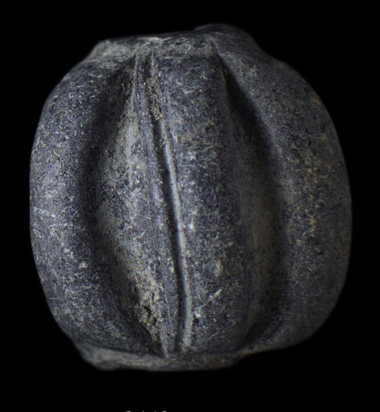 STUDIO PHOTOGRAPHS
STUDIO PHOTOGRAPHSIntroduction | Research | People | Tools
 STUDIO PHOTOGRAPHS
STUDIO PHOTOGRAPHS
GLASS BEAD (TYA 642: 2443)
Type: Half of a dark-blue bead with bulges parallel to the hole.
Use: Jewel.
Site: Raisio, Ihala, Mulli abode.
Period: Viking Age / Crusade Age / Early Middle Ages
Dating: 980-1220 A.D.
Photographer: Antti Huittinen.
Glass is made of quartz sand and alkali (e.g. sodium carbonate or potash made of wood ashes). Beads of molten glass can be made either by drawing or twisting the glass on a metal skewer. The latter technique became common in the late Viking period.
The first glass beads were made in Syria in ca. 500 B.C. In Finland, they were adopted in the 4th century A.D but did not become very common until the Viking and Crusade periods (ca. 800 - 1150 A.D.)
Manufacturing of beads was known in Russia. For example, in Staraya Ladoga (on the southern coast of Lake Ladoga) from the 8th to the early 11th century. Although it is probable that the Scandinavians were not able to make raw glass, there exists evidence of making glass beads. In Finland there is no evidence of manufacturing glass beads.
These "melon-shaped" beads were made by drawing and blowing hot glass. Apparently they were manufactured in the Islamic world on the Eastern Mediterranean. They may have been imported into Northern Europe via the trade-routes of the great rivers of Russia.
Other pictures:
Other related topics:
Introduction | Research | People | Tools